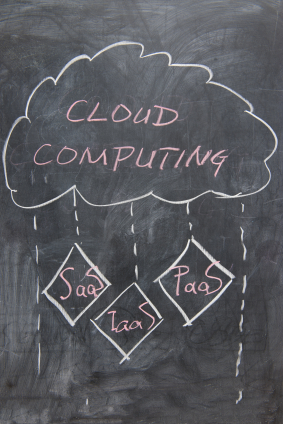
Evolution of the Cloud
Believe it or not, cloud computing dates back to the 1960s. The idea of a virtual network that could deliver computation services was first introduced in 1969 by ARPANET, although at the time it wasn’t practicable and it wasn’t called cloud computing. Next came Salesforce.com in 1999 offering enterprise applications online, followed by Amazon’s Web Services three years later.
In 2006, Amazon’s Elastic Compute cloud made it possible to “rent” computers on which to run applications, and in 2008 Amazon’s open source Eucalyptus platform hit the market. Since then, we’ve experienced tremendous growth in cloud computing options and resources, and virtual data rooms are one of the most exciting developments of the technology.
Cloud Service Delivery Models
Businesses can use cloud computing resources in one of three ways, each of which has benefits and disadvantages:
- Infrastructure as a Service (IaaS) – In this basic form of cloud computing, the service provider offers the use of virtual computers on which the client can install his own software programs.IaaS helps you avail resources in specific configurations at your will and delivers value to what one might find in a traditional datacenter.Simply put – this service model of cloud helps organizations to avail the equipments needed to support operations,including storage,hardware,servers and networking components from a third party. The Service provider retains the ownership and is responsible for housing,running and maintaining the equipment. GoGrid,Amazon’s Ec2 are some classic examples of IaaS service model
- Platform as a Service (PaaS) – PaaS offers the platform on which clients create their own applications without the expense of buying sophisticated development hardware.Paas is very much parallel to SaaS in certain ways, but rather than being a software delivered over the web(SaaS), it is a platform for the creation of software, delivered over the web(PaaS).App Engine from google and Sale Force.Com are some of the well known PaaS providers.
- Software as a Service (SaaS) – This commonly used form of cloud computing is the use of software on owned computer equipment.In this model a provider licenses an application to customers as a service on demand, through a subscription or in a “pay-as-you-go” model . From a technological perspective – SaaS brings in serveral advantages such as fast deployment, Cost predictability and scalability.Virtual data rooms typically falls into this category, because the client uses his own hardware to access the data room’s software online. The benfits of using a VDR clearly shows the capabilities of SaaS[Read the article here]
Opportunities Offered by Cloud
The use of cloud computing offers businesses a range of opportunities:
Firstly, there’s cost saving: whatever service delivery model you use, you’ll save by not having to buy the hardware, the software or the developer platform.
Second, there’s scalability. Being able to increase and decrease space, computer usage or inventory of hardware or software at any time boosts the cost savings. It’s not necessary to buy expensive equipment that becomes obsolete at the end of the project, neither do you risk running out of space mid-project because you underestimated the system requirements. IT support departments become largely defunct, since all support is available online. This streamlines the operation’s headcount and allows the company to focus on its core objectives.
The environmental benefits of cloud computing are significant and go beyond having fewer computers and printing less. The ability to serve hundreds of thousands of users from one location lowers emissions from transportation reduces the need for energy and even the requirement for business infrastructure.
It’s quick. Deployment is fast and easy, because all that’s needed is to connect to the server – there’s no longer a requirement to identify your needs, place an order and install equipment. In an instant you can deploy hundreds and thousands of servers, depending on your requirements.
Acknowledging the Risks
The risks associated with cloud computing focus on storage and movement of data: data transfer, data protocols, accessing and viewing of data. A secure Service provider takes these criteria seriously, and puts the highest of priorities on keeping security procedures current and client data secure. Whether you are a potential client of a service or you are a provider, security has to be the first step. Cloud computing vendors such as virtual data room providers should always be vetted thoroughly for compliance with ISO standards.
{{cta(’14e4527c-e9a0-4ddd-8eb2-fbb4f3f9352b’)}}



